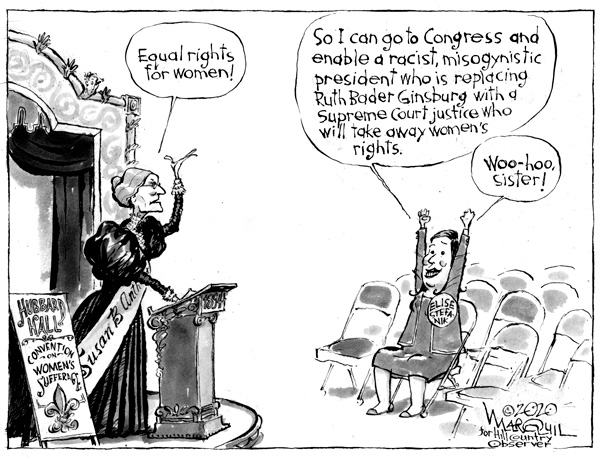Editorial October 2020
E D I T O R I A L
In ranked-choice voting, a cure for what ails
As this issue of the paper goes to press, our ears are still ringing from an event that was billed as the first presidential debate of the campaign season.
It was, of course, neither presidential nor debate, and the term harassment seemed more apt as the president repeatedly interrupted and heckled both his opponent and the moderator, driving them and his audience to distraction.
But perhaps this was a good thing, because it began to focus a lot of minds on how low our civic discourse has sunk – and on what we might do to save our democracy and begin to heal it.
The breadth of that task will depend on the results of the presidential election, which will be decided in precincts far from the three solidly blue states that contain our region. Voters here may have more influence in their choice of candidates for other federal and state offices, who are listed in our election preview on the following pages.
And in one part of our region, voters will weigh in on whether to overhaul their voting system in a way that might offer an antidote to the polarization of the past few years.
Question 2 on the Massachusetts ballot proposes to change the way voters cast ballots for most federal and state offices by adopting a system of ranked-choice voting. Under this system, also known as instant-runoff voting, voters would be able to rank as many candidates as they wish among a multi-candidate field – first choice, second choice, third choice, and so on.
If a count of the first-choice ballots doesn’t produce a majority for any candidate, the candidate with the lowest vote total would be eliminated, and that candidate’s votes would be reassigned to their voters’ second-choice candidates. The process of elimination would continue until one candidate received a majority.
Voters in Maine adopted ranked-choice voting in 2016, and the system has been widely used in Australia and Ireland as well as in some U.S. cities. (As in Maine, the ranked-choice system proposed for Massachusetts would not apply to presidential races or some local offices, but it would cover congressional and legislative seats and statewide offices.)
One benefit of the system is that it allows third parties (and fourth and fifth parties) a real chance to compete for votes without being seen as spoilers. That, in turn, encourages more serious candidates, with a wider range of views, to run for office. Voters, meanwhile, are able to act with a clear conscience in choosing as their first choice the candidate they like best – without fearing that they might tip the race to a candidate whose view they abhor.
Better still, because candidates need to get to 50 percent of the vote to win an election, the system creates incentives for moderation and pragmatism. Because candidates care about being voters’ second or third choices, if not their first, they’re more apt to reach out to constituencies beyond their own base of support.
Ranked-choice voting also would offer a path toward consensus in multi-candidate party primaries. This would be a particular benefit in Massachusetts, where a paucity of Republicans means many races are effectively decided in Democratic primaries. Too often, the winners of those races now are candidates who capture just 20 percent to 30 percent of the primary vote in a crowded field. A ranked-choice balloting system would yield a candidate with a demonstrated breadth of support, rather than the last candidate standing.


